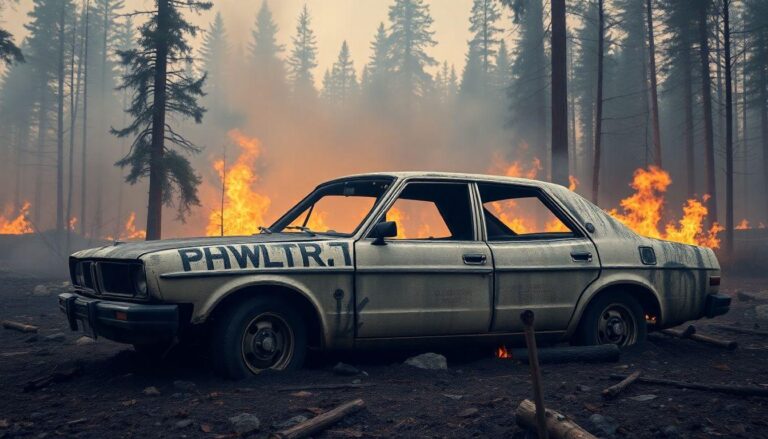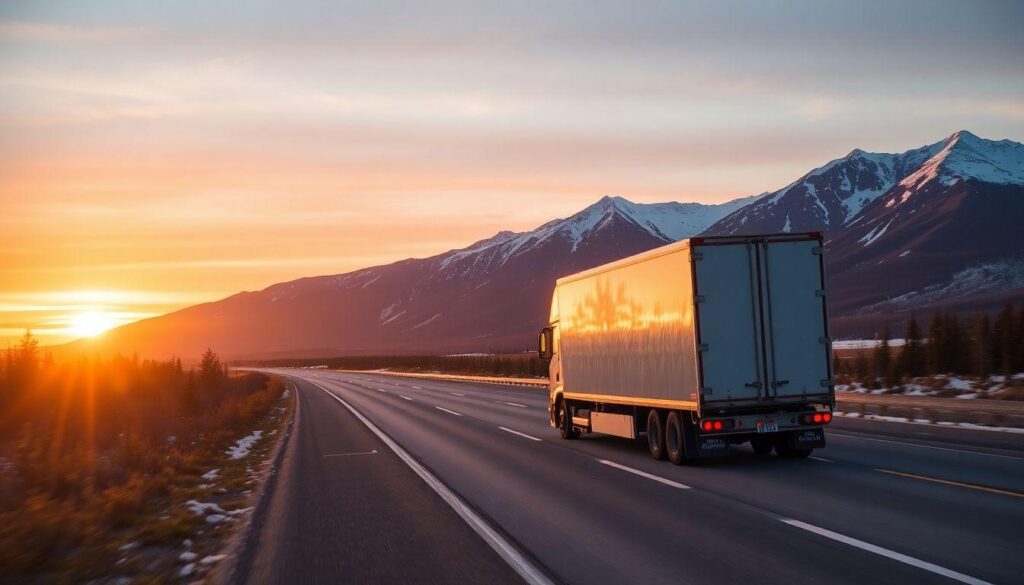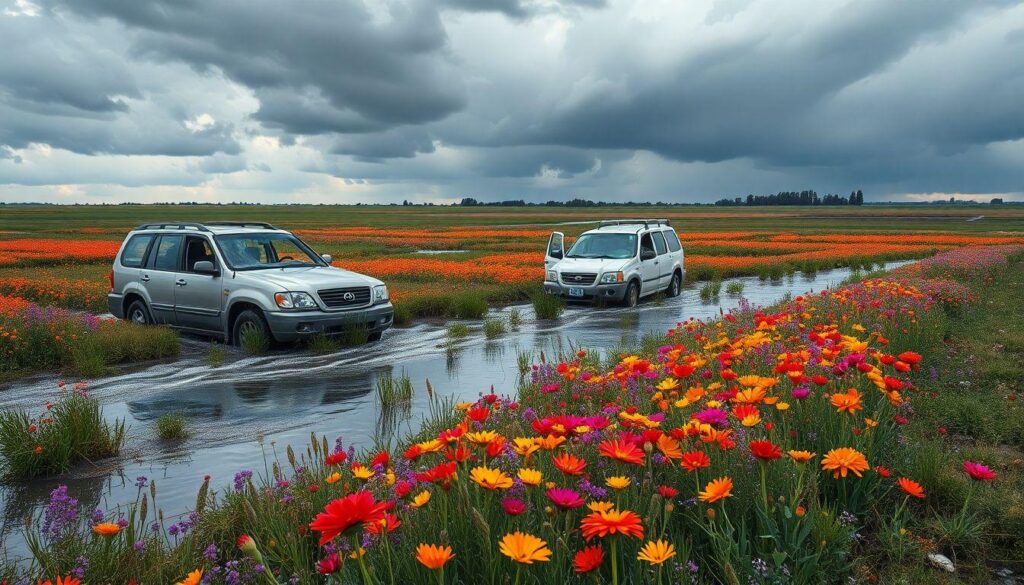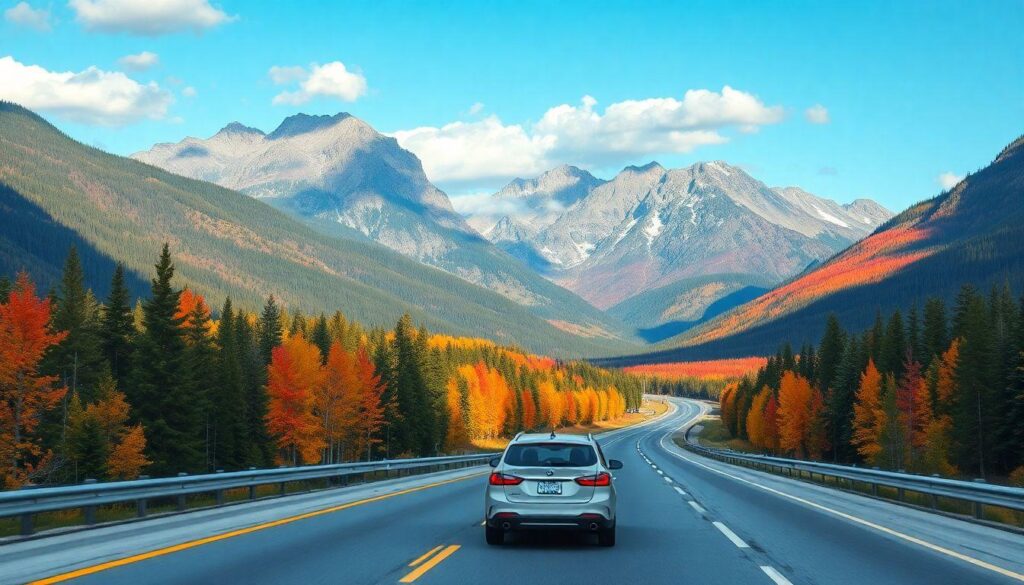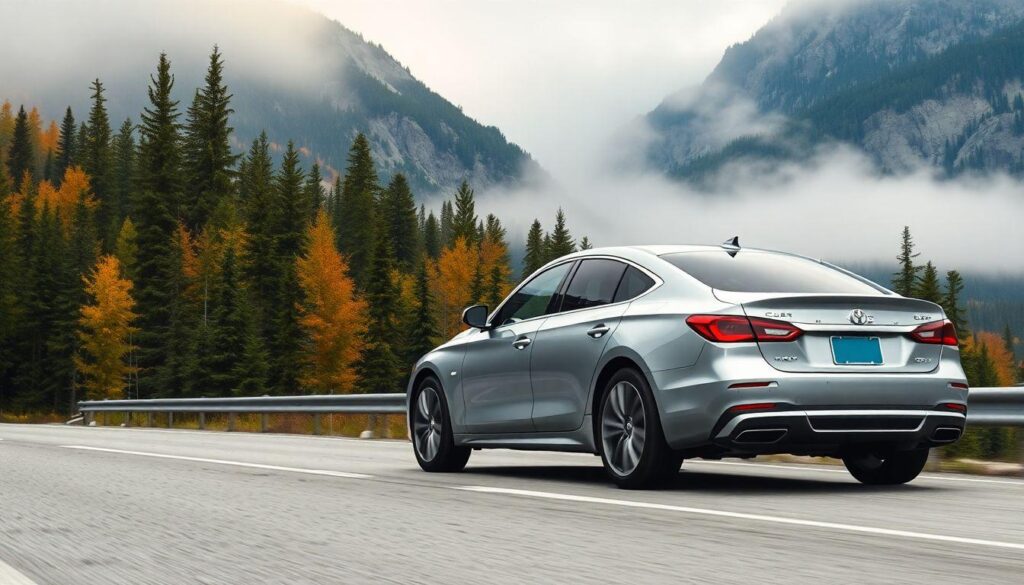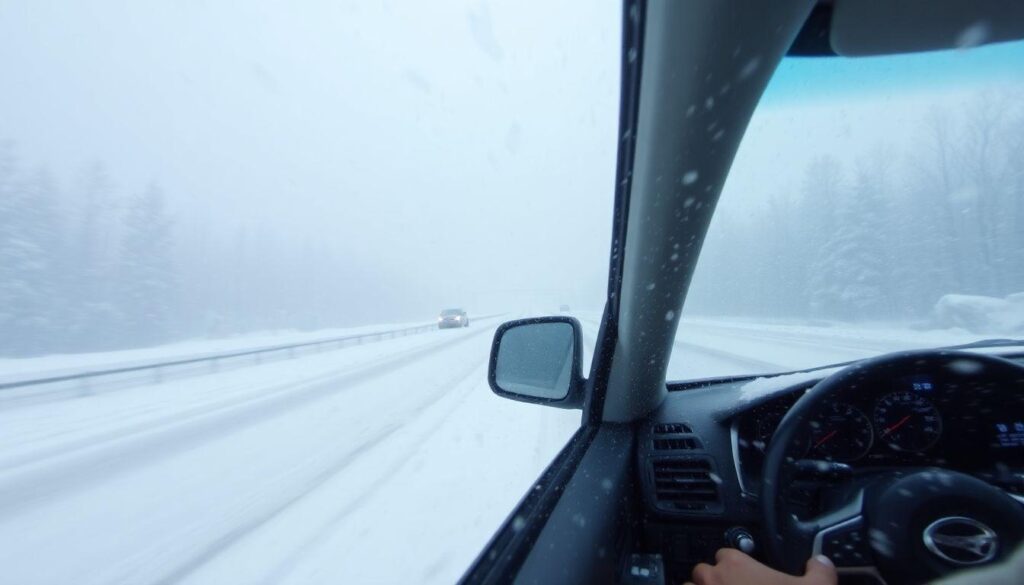As we head toward 2025, Canadian women are facing an unexpected challenge that’s reshaping how we think about car insurance. The increasing frequency and intensity of wildfires across the country aren’t just threatening our homes and communities – they’re fundamentally changing the landscape of Canadian auto insurance.
Picture this: you’re driving through British Columbia or Alberta during fire season, and suddenly you’re caught in an evacuation zone. Your car becomes more than just transportation – it’s your lifeline to safety. But what happens when wildfire smoke damages your engine, or flying embers crack your windshield? These scenarios are becoming increasingly common, and insurance companies are taking notice.
The Real Cost of Fire Season on Your Vehicle
You know what’s surprising? Most of us think about protecting our cars from hail or theft, but wildfire damage often catches drivers off guard. The reality is that wildfires affect vehicles in ways many women haven’t considered. Smoke infiltration can damage air filters and interior fabrics, while ash and debris create a fine coating that’s surprisingly corrosive to paint and metal surfaces.
Insurance adjusters are seeing claims they never imagined five years ago. Cars abandoned during emergency evacuations suffer heat damage even when they don’t burn completely. The paint bubbles, tires melt, and electronic systems fail from extreme temperatures. Meanwhile, vehicles driven through heavy smoke zones experience engine problems months later when that fine particulate matter works its way through the system.
When Evacuation Becomes Expensive
Emergency evacuations present unique challenges for car insurance coverage. Many policies don’t clearly address situations where you’re forced to abandon your vehicle during a wildfire evacuation. Some women have discovered that their comprehensive coverage doesn’t extend to personal belongings left in the car during an emergency escape.
The emotional toll adds another layer of complexity. Imagine fleeing your home with your children and pets, only to worry later about whether your insurance will cover the car you left behind. These situations require insurance policies that understand the human element of natural disasters.
How Insurance Companies Are Adapting Their Approach
Smart insurers recognize that Canadian auto insurance needs to evolve with our changing climate. They’re developing new assessment tools that factor in wildfire risk by postal code, similar to how they currently evaluate flood zones or high-crime areas.
Some companies are introducing wildfire-specific coverage options that address the unique challenges these disasters present. This includes:
- Extended coverage for smoke and ash damage
- Emergency evacuation benefits that cover additional transportation costs
- Accelerated claims processing during declared emergency situations
- Coverage for personal items stored in vehicles during evacuations
The shift represents a fundamental change in how insurers calculate risk. Traditional models focused on accidents, theft, and weather events like hail. Now they’re incorporating wildfire probability maps and evacuation route planning into their risk assessments.
Technology Meets Fire Prevention
Insurance companies are embracing technology to help customers prepare for wildfire season. Mobile apps now send real-time alerts about fire danger in your area, while some insurers offer discounts for vehicles equipped with air filtration systems designed to handle heavy smoke.
Telematics programs are evolving too. These systems, which monitor your driving habits, can now provide guidance during emergency situations. They might suggest alternate evacuation routes or alert you to dangerous air quality levels before you notice them yourself.
What This Means for Your Wallet
Let’s talk about the financial reality. Wildfire risk is becoming a significant factor in premium calculations, especially for women living in high-risk areas of Alberta, British Columbia, and northern Ontario. However, the impact isn’t necessarily negative across the board.
If you live in a lower-risk urban area, you might actually see slight premium reductions as insurers become more precise in their risk mapping. Conversely, rural and wilderness-adjacent communities are experiencing premium increases that reflect their elevated exposure to wildfire damage.
The key is understanding how your specific situation affects your rates. Factors like proximity to fire-prone forests, local emergency response capabilities, and even your home’s defensible space can influence your auto insurance premiums.
Preparing Your Coverage for Fire Season
Being proactive about wildfire preparedness can actually help manage your insurance costs. Many insurers offer discounts for customers who complete wildfire safety courses or maintain emergency kits in their vehicles.
Consider reviewing your coverage limits annually, especially if you live in areas with increasing fire activity. Comprehensive coverage becomes even more valuable when wildfire risk is high, but make sure your deductible aligns with your financial comfort level.
The Bigger Picture: Climate and Community
The conversation about wildfires and auto insurance connects to broader discussions about climate adaptation in Canada. As women, we’re often the primary decision-makers for family insurance needs, making us key players in how the industry evolves.
Insurance companies are recognizing that wildfire preparation isn’t just about individual policies – it’s about community resilience. Some insurers are partnering with municipalities to improve evacuation planning and emergency communication systems.
This community-focused approach benefits everyone. Better evacuation routes mean fewer abandoned vehicles. Improved emergency communication reduces the confusion that leads to insurance disputes. Enhanced wildfire prevention efforts help keep premiums manageable for entire regions.
Looking Ahead to 2025 and Beyond
The trajectory toward 2025 suggests we’ll see continued innovation in wildfire-related auto insurance products. Expect more personalized coverage options that reflect your specific risk profile and lifestyle choices.
Climate scientists project that fire seasons will continue lengthening and intensifying, making wildfire preparedness a year-round consideration rather than a seasonal concern. Insurance products will likely evolve to match this reality, offering more flexible coverage that adapts to changing risk levels throughout the year.
As we navigate these changes, the insurance industry is learning that Canadian auto insurance must be as resilient and adaptable as the communities it serves. The companies that succeed will be those that understand wildfire risk isn’t just about property damage – it’s about supporting families through some of the most challenging situations they’ll ever face.
The evolution of wildfire-related auto insurance coverage represents more than just policy adjustments; it reflects our collective adaptation to a changing climate. By 2025, we can expect insurance products that are more responsive, more precise, and more supportive of the real-world challenges Canadian families face during fire season. If you found these insights helpful, feel free to share this article with your friends and followers!

